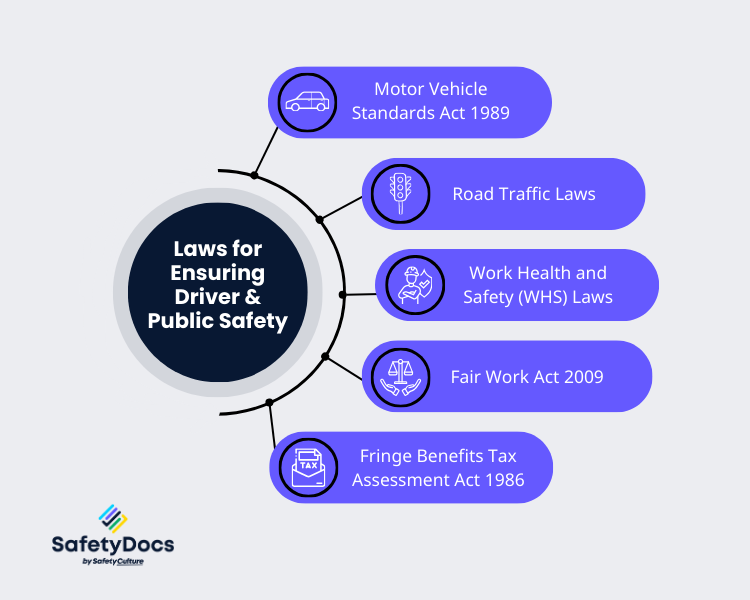Small businesses make up a substantial share of the Australian economy’s output, employment, and income, accounting for around one-third of total employment. Yet, these enterprises often operate with limited resources and personnel, making it tempting to neglect human resource management. Ignoring human resource management, however, can lead to various issues, from misunderstandings and inconsistent practices to an elevated risk of legal disputes. Aligning HR practices with standards recognised by the Australian HR Institute ensures compliance and excellence in HR management.
A solid background in business administration is helpful in effectively managing HR in small businesses, as it provides the foundational knowledge necessary for navigating the complexities of human resource management.
Consider a scenario where a small business needs to maintain proper human resource management, including HR policies and documentation. Without clear employment agreements or policies in place, disputes may arise. Such conflicts strain employer-employee relationships and can result in costly legal proceedings, tarnishing the business’s reputation and financial stability.
This blog post will discuss the top 10 HR documents every small business should have to ensure smooth operations and compliance. Let’s dive into how small businesses can optimise their human resource management.
Top 10 HR Documents
1. Employment Agreements (Contracts)
Employment agreements, or contracts, are the foundation of any employment or industrial relations. They outline the terms and conditions of an employee’s role and set clear expectations for both parties. These contracts are foundational to maintaining positive employee relations and managing employment relations effectively. They minimise misunderstandings and provide a legal framework for industrial relations, protecting both parties by clearly outlining rights, responsibilities, and expectations. These contracts minimise misunderstandings and provide a legal framework for industrial relations, protecting both parties by clearly outlining rights, responsibilities, and expectations. HR professionals typically handle the creation and management of employment agreements.
A typical employment agreement includes the following components:
- Start and end dates of employment
- Job title or role and duties
- Type of employment, whether it is full-time, part-time, or casual
- Pay rate and benefits
- Working hours and leave entitlements
- Termination procedures
Imagine a small business that needs to formalise employment contracts. Employees may claim they were promised a higher pay rate than they received. The company can support its case with proper documentation, potentially damaging its business reputation and financial loss.
Compliance
Employment agreements must adhere to relevant employment laws, such as:
- The Fair Work Act of 2009: The central legislation governing employment in Australia is the Fair Work Act of 2009. It sets the standards for employment contracts, national minimum wage, unfair dismissal, and other employment rights and obligations.
- National Employment Standards (NES): The NES are 12 minimum employment entitlements for all employees. The standards cover maximum weekly hours, requests for flexible work arrangements, parental leave, and related entitlements.
- Modern Awards:provide pay rates and conditions of employment specific to certain industries or occupations. They operate on top of the NES and can include provisions related to overtime, penalty rates, types of employment, and more.

2. Worker Code of Conduct Policy
A code of conduct is a set of rules and principles that guide employee behaviour and expectations within the workplace. It outlines acceptable and unacceptable conduct, both on- and off-duty. Companies typically rely on HR professionals to create and enforce the Code of Conduct policy. It serves as a reference point for disciplinary action in misconduct cases. It is a blueprint for guiding employees' daily interactions and decision-making processes.
Creating an effective Code of Conduct policy involves:
- Defining the company's core values and overall mission
- Outlining key policy areas for workplace behaviour, dress code, language, etc.
- Describing procedures for reporting violations and handling complaints
- Implement the Code via training and communication through human resources
- Review and update the policy, potentially with HR professionals, to align with changes in employment laws and company policies.
Imagine a small business owner notices that an employee has been making inappropriate comments in the workplace that can potentially create a hostile work environment. Without a Code of Conduct policy in place, the owner must rely on their judgement for disciplinary action, which leaves them vulnerable to bias and legal disputes.
Compliance
A Worker's Code of Conduct Policy should adhere to relevant laws and regulations such as:
- Public Service Act 1999: Particularly relevant to the Australian Public Service (APS), this Act contains the APS Code of Conduct. The Code mandates that APS employees behave in a way that upholds the APS Values and Employment Principles, including behaving honestly and with integrity, acting with care and diligence, and treating everyone with respect and courtesy.
- Corporations Act 2001: This law is crucial for corporate governance in Australia, impacting how companies operate and are regulated. Included within its provisions are expectations around corporate behaviour and ethics.
- Australian Consumer Law (ACL): Part of the Competition and Consumer Act 2010, the ACL sets out consumers' rights and protections, which businesses must adhere to. Codes of conduct developed by organisations often reference the need to comply with ACL provisions, especially regarding fair trading, honest advertising, and consumer rights.
- Anti-Discrimination Laws: Various federal and state laws in Australia outline obligations for organisations to prevent discrimination. These laws prohibit discrimination based on race, colour, religion, sex, national origin, age, and disability.
- Industry-specific Legislation: Many industries have specific legislation and regulatory bodies that dictate standards and behaviours. For example, the financial services industry is regulated under the Australian Securities and Investments Commission Act 2001, and healthcare providers must adhere to standards set by the Health Practitioner Regulation National Law.
3. Anti-Discrimination, Harassment, and Bullying Policies
Employers have a legal duty to ensure their workplace is free from discrimination, harassment, and bullying. Anti-discrimination, harassment, and bullying policies promote a safe and inclusive workplace environment. These policies define unacceptable behaviour and detail how to report and handle incidents. HR professionals are key in developing and enforcing these policies. They empower employees to speak up against misconduct and ensure that grievances are promptly investigated and resolved.
To prevent discrimination, harassment, and bullying in the workplace, employers should:
- Develop clear policies outlining unacceptable behaviour and procedures for reporting through human resources.
- Communicate policies to all employees and provide training.
- Address incidents promptly and take appropriate disciplinary action.
- Regularly review and update the policies.
- Encourage a workplace culture of respect and inclusivity, emphasising organisational behaviour.
This policy is needed in situations such as when a manager makes offensive remarks to an employee based on their gender or sexual orientation. Without a policy in place, the employee may feel powerless and may be hesitant to speak up. An anti-discrimination, harassment, and bullying policy provides clear guidelines for addressing such incidents.
Compliance
These policies should comply with laws and regulations such as:
- Federal Anti-Discrimination Laws: As mentioned earlier, various federal and state laws prohibit discrimination in the workplace. Some specific federal laws include:
- State and Territory Legislation: Each state and territory in Australia has its anti-discrimination laws that employers must abide by.
- New South Wales: Anti-Discrimination Act 1977
- Victoria: Equal Opportunity Act 2010
- Queensland: Anti-Discrimination Act 1991
- Western Australia: Equal Opportunity Act 1984
- South Australia: Equal Opportunity Act 1984
- Tasmania: Anti-Discrimination Act 1998
- Australian Capital Territory: Discrimination Act 1991
- Northern Territory: Anti-Discrimination Act 1992
- Sexual Harassment: Sexual harassment is defined in the Sex Discrimination Act 1984 as unwelcome sexual advances, requests for favours, or conduct of a sexual nature that could offend, humiliate, or intimidate, as seen by a reasonable person.
4. Internet and Technology Use Policy
Businesses are increasingly dependent on technology to facilitate their operations today. As a result, employers must establish boundaries and guidelines for using technology in the workplace. An Internet and Technology Use Policy outlines the acceptable use of company-owned devices and network resources, sets privacy and security expectations, and clarifies misuse consequences. Human resource management may collaborate with IT departments to develop this type of policy.
This policy is applicable when, for instance, an employee inadvertently exposes confidential company data by accessing insecure websites on a company computer. Without clear guidelines, such incidents pose significant risks to data security. They may result in financial losses or reputational damage for the business.
Compliance
Compliance with laws related to internet and technology use in the Australian workplace is crucial for employers and employees to ensure a safe, productive, and legally compliant work environment. Integrating digital tools, platforms, and communications in business operations brings several legal considerations to the forefront. Here are key areas of compliance for workplaces in Australia:
1. Privacy and Data Protection
- Privacy Act 1988 and the Australian Privacy Principles (APPs) mandate how personal information should be handled. Workplaces must ensure that the personal data of employees and customers is collected, used, stored, and disclosed in compliance with these principles.
- The Notifiable Data Breaches (NDB) scheme requires organisations to notify individuals and the Office of the Australian Information Commissioner (OAIC) about data breaches likely to result in serious harm.
2. Workplace Monitoring and Surveillance
Various state and territory surveillance and monitoring laws regulate how employers can monitor and record their employees' activities, including internet usage, email, and computer access. They are subject to both federal and state or territory laws. These laws include the Workplace Surveillance Act 2005 of New South Wales, the Invasion of Privacy Act 1971 of Queensland, and the Listening Devices Act 1991 of Tasmania, among others.
3. Cybersecurity
Under the Cybercrime Act 2001, employers are responsible for protecting their systems and data from cyber threats. This responsibility falls under their general human resource management obligations. Cybercrime Act 2001reports certain types of cybercrime.
4. Intellectual Property Rights
Workplace policies must cover the use of copyrighted material and protect the company's intellectual property. The Copyright Act of 1968 safeguards these rights online. Both employers and employees must make sure content in the workplace respects copyright laws, contributing to sound human resources practices.

5. Performance Management System
A performance management system facilitates the assessment and development of employee performance, driving organisational productivity and growth. This system encompasses processes for goal setting, performance evaluations, feedback mechanisms, and performance improvement plans. It enables managers to track employee progress, recognise achievements, and constructively address performance issues.
A small business that lacks a formal performance management system risks creating a disorganised and inconsistent approach to managing employee performance. For example, an employee may receive a promotion despite consistently performing poorly. It can lead to demotivated and resentful staff.
A comprehensive performance management system should include the following elements:
- Performance Standards: These are the agreed-upon benchmarks for measuring employee performance.
- Goal Setting: Setting specific and measurable objectives that align with business goals.
- Performance Appraisals: These are formal evaluations of an employee's performance against established standards and goals.
- Feedback: Regular feedback should include both positive reinforcement and constructive criticism.
- Performance Improvement Plans (PIPs): PIPs are formal processes for addressing performance issues and helping employees improve.
- Performance Agreement Template: This template outlines the employee and employer's expectations and responsibilities regarding performance.
Compliance
While there may be no specific legal requirements for performance management systems, managing employee performance effectively is an important aspect of human resource management. Employers have general obligations to provide a safe and healthy work environment.
The Fair Work Ombudsman offers a comprehensive guide on managing underperformance, ensuring adherence to the Fair Work Act 2009. This resource details the benefits of an organisation adopting a best-practice approach for handling underperformance, including strategies to effectively identify, tackle, and reduce workplace underperformance, all essential for strong human resource management.
6. Payroll and Leave Management
Managing payroll and leave accurately is a crucial aspect of running a business within the framework of effective human resource management. Even small businesses must comply with fair work laws and regulations for employee remuneration and leave entitlements. These systems simplify payroll by calculating wages, deducting taxes, and managing payments. They also allow employees to efficiently handle leave requests, easing the workload on human resources staff.
When a small business does not have a proper payroll and leave management system, it may lead to compliance issues, errors, and disputes. As a result, employers may face legal ramifications such as penalties for underpayment or non-compliance with leave entitlements.
Compliance
Australian laws relevant to payroll and leave management include:
- The Fair Work Act
- National Employment Standards
- Modern Awards
- Single Touch Payroll
- PAYG Tax Compliance
- Payroll Tax
- Superannuation Compliance
- Record-Keeping Obligations
- Annual Reporting Obligations
- Overtime and Penalty Rates
- Leave Entitlements
Compliance with these laws is essential for businesses to meet their employment and payment obligations in Australia, which falls squarely under the umbrella of human resource management.
7. Workplace Health and Safety Policy and Procedures
Workplace health and safety (WHS) is crucial to employees' well-being and business success. WHS policies and procedures aim to prevent workplace accidents, injuries, and illnesses. They also promote a positive work culture that prioritises employee safety.
WHS policy and procedures are mostly needed when operating heavy machinery, working in hazardous environments, or handling dangerous substances. All employers are legally obligated to provide their employees with a safe and healthy work environment – a core component of human resources responsibilities.
Compliance
Businesses must comply with the regulations which outline the duties and responsibilities of employers to ensure workplace health and safety. These laws also require businesses to regularly review their policies and procedures, conduct risk assessments, and provide WHS training for employees.
- Additionally, there may be industry-specific regulations or codes of practice that businesses must adhere to, such as the Managing the Risk of Psychosocial Hazards at Work Code of Practice 2022 in QLD
8. Privacy Policy
A privacy policy outlines how a business collects, uses, and protects sensitive information about customers, employees, and other stakeholders. Small companies that collect personal information through their website must have a privacy policy. For example, if a business collects employees' personal information for payroll or leave management purposes, it must have one.
This policy informs individuals about the types of personal information collected, the purposes for which it is used, and the measures taken to safeguard it. It also outlines individuals' rights regarding their data and procedures for addressing privacy concerns or breaches.
Compliance
In Australia, privacy policy compliance for small businesses is primarily governed by:
- Privacy Act 1988: The Privacy Act applies to Australian Government agencies, all private sector and not-for-profit organisations with an annual turnover of more than $3 million, and some small business operators (SBOs) who handle personal information in certain circumstances.
- Australian Privacy Principles (APPs): The APPs in the Privacy Act detail rules for handling personal information, including getting consent before collection, using it only for intended purposes, and protecting it from unauthorised access.
- Notifiable Data Breaches (NDB) scheme: Part of the Privacy Act, the NDB scheme requires organisations covered by the Act to notify any individuals likely to be at risk from a data breach.
9. Disciplinary Action Policy and Procedures
Disciplinary action policies and procedures are crucial in maintaining workplace order. These policies outline the steps to be taken when an employee engages in misconduct or underperformance. It provides a structured approach to addressing such issues.
Without clear guidelines, managers may handle disciplinary matters inconsistently. For instance, some may issue a verbal warning, while others may jump straight to termination. This can create confusion among employees and lead to potential legal disputes.
Compliance
While no specific laws govern disciplinary action policies, employers must ensure that their actions comply with relevant legislation such as the Fair Work Act 2009 and the Australian Human Rights Commission Act 1986. Employers should also ensure that their disciplinary policies align with any applicable Modern Awards, Enterprise Agreements, or employment contracts.

10. Company Vehicles Policy
Like any other business, small enterprises may require company vehicles for various purposes, such as transporting goods, attending meetings or site visits, and running daily operations. A clear company vehicles policy ensures that vehicle use is efficient, safe, and complies with legal requirements.
The policy should cover areas such as:
- Vehicle acquisition: guidelines on purchasing and leasing vehicles
- Vehicle maintenance: regular servicing and safety checks
- Vehicle usage: rules for personal use, commuting, and business-related travel
- Insurance coverage: types of insurance needed for vehicles and drivers
- Driver Requirements: minimum age, valid licence, and training obligations
Compliance
Several laws and regulations regarding company vehicle policies for small businesses in Australia need to be considered. These laws ensure the safety of drivers and the public, protect the environment, and ensure fair and equitable treatment of employees.
- Motor Vehicle Standards Act 1989: covers the standards for new and imported vehicles in Australia to ensure they meet specific safety, environmental, and anti-theft standards.
- Road Traffic Laws: Each Australian state and territory has its own Road Traffic Act or equivalent legislation governing the use of vehicles on public roads.
- Work Health and Safety (WHS) Laws: WHS laws require employers to provide a safe working environment, which includes company vehicles used for business purposes.
- Fair Work Act 2009: Employers must comply with this legislation when it comes to their employees' use of company vehicles, including providing fair and equitable treatment and ensuring
- Fringe Benefits Tax (FBT) Assessment Act 1986:The FBT Assessment Act regulates how fringe benefits, including company cars, are taxed. Small businesses must understand their obligations under this Act, including keeping appropriate records and reporting benefits accurately.
We Simplify HR Management
Setting up HR systems can seem overwhelming for small business owners, especially regarding compliance requirements when they have limited time and resources. With our tools, you can easily create policies and procedures tailored to your business needs while ensuring compliance with relevant laws and regulations. Let our HR resources make your human resources processes smoother!
SafetyDocs by SafetyCulture offers customisable HR documentation templates to help small businesses simplify their HR management. With our tools, you can easily create policies and procedures tailored to your business needs while ensuring compliance with relevant laws and regulations.
Our HR package, standalone HR Manual, and Worker Handbook provide expertly crafted templates and guidance, saving you time and preventing costly mistakes. Check out the following documents:
Contact us today for a personalised assessment of your HR needs and how we can help you simplify your HR management. Invest in your people; invest in your business's success. Let SafetyDocs be your HR partner.
Share This Article
